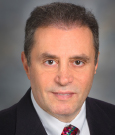Physicians have a duty to speak up against high cancer drug prices,” Hagop M. Kantarjian, MD, resolutely stated in an interview with The ASCO Post. “We should speak up because high drug prices are harming patients.” A leader in the effort to drive down the cost of drugs needed to treat patients with cancer, Dr. Kantarjian is Chair of the Department of Leukemia at The University of Texas MD Anderson Cancer Center in Houston.
Last year, Dr. Kantarjian led a group of more than 100 chronic myeloid leukemia (CML) experts in writing a well-documented opinion article for Blood to call attention to the high prices of cancer drugs—in particular, tyrosine kinase inhibitors for the treatment of CML—and the need to lower prices of cancer drugs so more patients could afford these drugs.1 More recently, Dr. Kantarjian was lead author of an article published by the Journal of Oncology Practice (JOP) online, which proposed solutions to problems related to the high cost of cancer drugs.2
Patients Forgoing Treatment
Efforts by other physicians, insurers, and elected officials to raise attention to the escalating cost of cancer treatment have been in the news recently. A Washington Post blog reported that over the past decade, “the average cost of a brand-name cancer drug jumped from about $5,000 per month to $10,000 per month in 2013.”3 Articles in The New York Times and Bloomberg have focused on the ASCO Value in Cancer Care Task Force and its initiative to develop a framework to evaluate the value in oncology regimens.4,5 A follow-up article in Bloomberg News quoted ASCO Immediate Past President Clifford A. Hudis, MD, FACP, as calling the need to address the rising cost of cancer care as “a moral imperative.”6
“When we wrote the Blood article, there was not much information on how many patients do not take treatment and how many modify the treatment due to high costs,” Dr. Kantarjian said. “Drug companies were saying, ‘We have the free drug program, so no patients should go without the treatment.’ And then there were at least two articles that showed that patients were in fact forgoing treatment or skipping medications.”
One of those articles, published earlier this year in the Journal of Clinical Oncology,7 was cited by Dr. Kantarjian and his JOP coauthors in stating that an estimated 10% to 20% of patients may decide not to take treatment or to compromise significantly on the treatment plan because of high drug costs.
Assigning Value
Dr. Kantarjian and others have proposed basing drug prices on how much they help patients. For example, a cancer drug that improves life expectancy for more than 1 year might be priced at $40,000 to $50,000 vs $20,000 to $30,000 for a drug that lengthened survival by 3 to 5 months.
“At some point, you have to put a value on a drug,” Dr. Kantarjian said. “If a drug does not prolong life, why are we paying $100,000 for it?” In other countries, such as New Zealand, Australia, European nations, and Canada, Dr. Kantarjian noted, after a drug is approved, the government, which in many cases is paying for patients to get certain drugs, assigns value to drugs.
“Let the drug value reflect its efficacy. Currently there is zero correlation between the efficacy of the drug in terms of survival prolongation and the price of a drug. Some drugs prolong life by years and others prolong life by days, yet both are priced the same per year,” Dr. Kantarjian said.
“We have to assign some value to the drug, and this is where the societies like the American Society of Clinical Oncology, the American Society of Hematology, and others could develop pathways that include what would be referred to as treatment value or drug value,” Dr. Kantarjian said. Among factors that would be considered in determining the value of a given regimen would be its objective efficacy, side effects, and cost, Dr. Kantarjian noted.
Reducing the Hype
“Professional societies representing cancer specialists and advocating for cancer patients should be involved in reducing the hype around new cancer drugs that do not have a major impact on patient outcomes,” Dr. Kantarjian and coauthors advised in the JOP article. “Right now, the doctors say, ‘I am going to give the best treatment to my patients, regardless of the price.’ And I agree with that position,” Dr. Kantarjian said. “But the reality is that oncologists are influenced by advertisements and by societies promoting minor improvements as major breakthroughs. This pushes oncologists into a corner, and patients come to their office saying, ‘I want this drug. How can you say it is not a good drug if it was highlighted at ASCO as a breakthrough?’”
What is needed, according to Dr. Kantarjian, is for professional societies “to highlight new discoveries for what they truly are, rather than how pharmaceutical companies want them highlighted. And professional societies have to develop pathways that incorporate drug value,” he added.
“Once we have this, a practicing oncologist could say to patients, ‘This is what the American Society of Clinical Oncology says.’ Oncologists would not be under pressure to prescribe the most expensive drug because it was advertised at a national meeting and by drug companies as being the best.”
Importation of Foreign Drugs
Proposals to allow importation of drugs from foreign countries have met “strong pushback from the pharmaceutical companies, stating that allowing the importation is dangerous because it could put the lives of American citizens at risk,” Dr. Kantarjian said. But those “scare tactics” are preventing U.S. patients from getting safe medication at lower prices. He cited a New York Times op-ed piece contending that drugs currently considered by the U.S. Food and Drug Administration to be “foreign unapproved drugs” do not pose the same risk as counterfeit drugs sold online.8
Those foreign unapproved drugs “are often the exact same ones sold here. Or they’re different brands, or generic versions of domestically sold drugs. Thus, many foreign unapproved drugs—specifically those ordered from licensed pharmacies—are almost always going to be safe and effective, like their United States counterparts, whereas a counterfeit drug will almost always be dangerous,” wrote Gabriel Levitt, Vice President of PharmacyChecker.com. The company “helps Americans find information on obtaining lower-cost medications from Canada and other countries, so I have a financial stake in making sure the public is informed,” he noted.
“Brand-name drugs that are still on patent in the U.S. are often 80% less expensive at reputable international online pharmacies,” he added. “Without online access, more Americans will go without prescribed medicines.”
Other Potential Solutions
Other potential solutions proposed to bring about more reasonable drug prices are allowing Medicare to negotiate drug prices and eliminating pay-for-delay strategies. As noted in the Blood article, “Arrangements by pharmaceutical companies that pay generic companies to delay entering the market with a generic version profit both companies, but financially hurt the national healthcare system and patients.”1
“Drug companies should not be allowed to use pay-for-delay strategies in order to delay availability of generics,” Dr. Kantarjian told The ASCO Post.
“When President Obama was negotiating the Affordable Care Act, the plan was to allow Medicare to negotiate drug prices, but because he needed the drug companies to be on board and support the Affordable Care Act, he had to forgo this,” Dr. Kantarjian remarked. But now, he added, “we should encourage legislation to allow Medicare to negotiate drug prices.”
Risks and Responsibilities
“We should encourage lobbying and legislation to allow Medicare to negotiate drug prices. We should allow importation of drugs. We should forbid drug companies from implementing pay-for-delay strategies and delaying generics. All these are important additive solutions that will weaken the oligopoly of cancer drug pricing that exists today,” Dr. Kantarjian said.
“It would be nice to quote George Merck,” he suggested. The quote from the late George Merck, who took over the family pharmaceutical business from his father in 1929, comes from a 1952 Time magazine cover story: “Medicine is for the people. It is not for
the profits.” ■
Disclosure: Dr. Kantarjian reported no potential conflicts of interest.
References
1. Abboud C, Berman E, Cohen A, et al: The price of drugs for chronic myeloid leukemia is a reflection of the unsustainable prices of cancer drugs. Blood 121:4439-4442, 2013.
2. Kantarjian H, Steensma D, Sanjuan JR, et al: High cancer prices in the United States: Reasons and proposed solutions. J Oncol Pract. May 6, 2014 (early release online).
3. Millman J: Expensive cancer drugs are all the rage in pharma these days. Washington Post Wonkblog, May 6, 2014.
4. Pollack A: Cost of treatment may influence doctors. New York Times, April 17, 2014.
5. Damouni S, Langreth R: Cancer doctors plan to compare value of expensive drugs. Bloomberg. April 17, 2014.
6. Langreth R: Cancer doctors join insurers in U.S. drug-cost revolt. Bloomberg. May 7, 2014.
7. Dusetzina SB, Winn AN, Abel GA, et al: Cost sharing and adherence to tyrosine kinase inhibitors for patients with chronic myeloid leukemia. J Clin Oncol 32:304-311, 2014.
8. Levitt G: Scare tactics over foreign drugs. New York Times. March 25, 2014.
In the News focuses on media reports that your patients may have questions about at their next visit. This continuing column will provide summaries of articles in the popular press that may prompt such questions, as well as comments from colleagues in the field.



